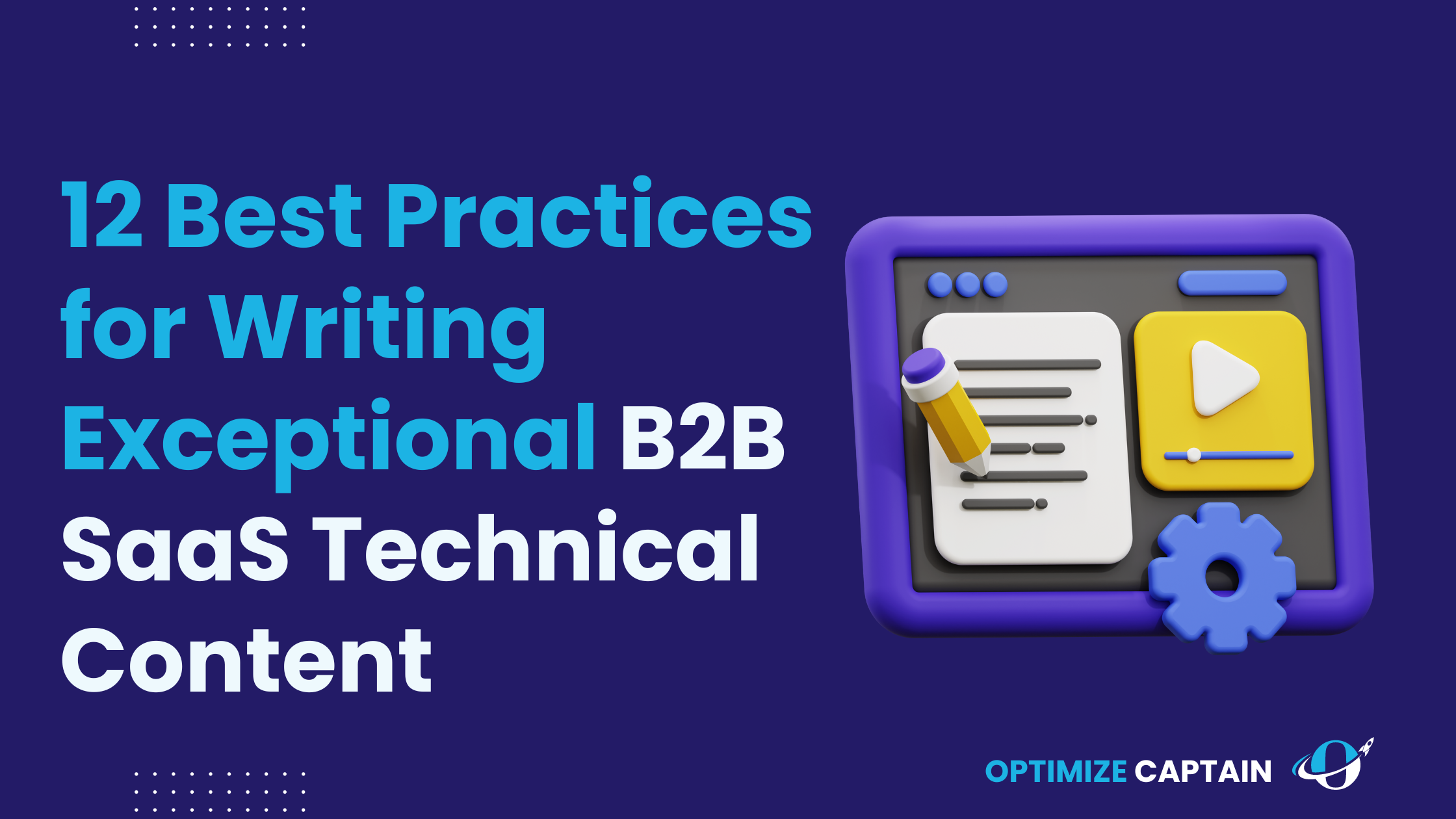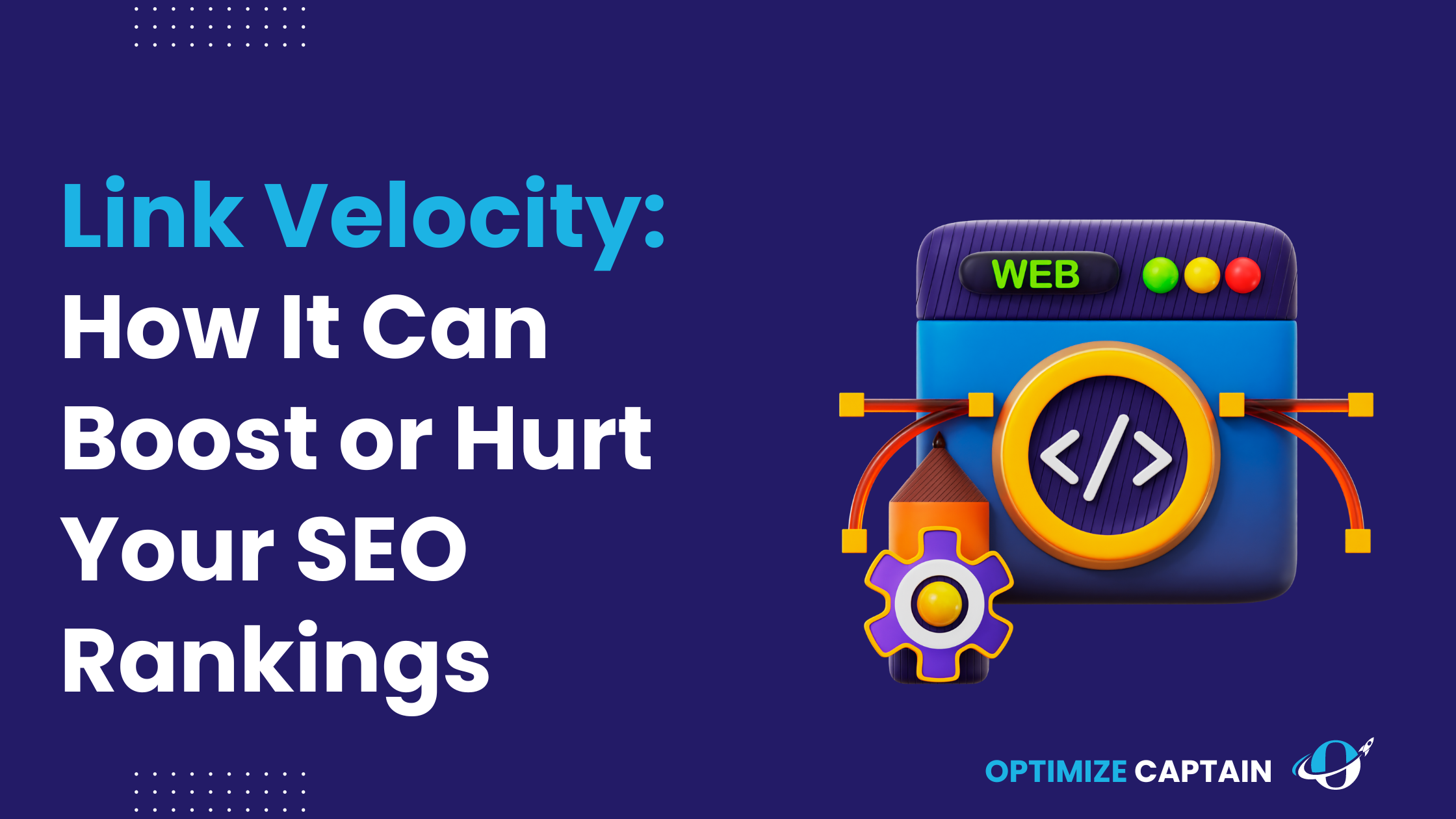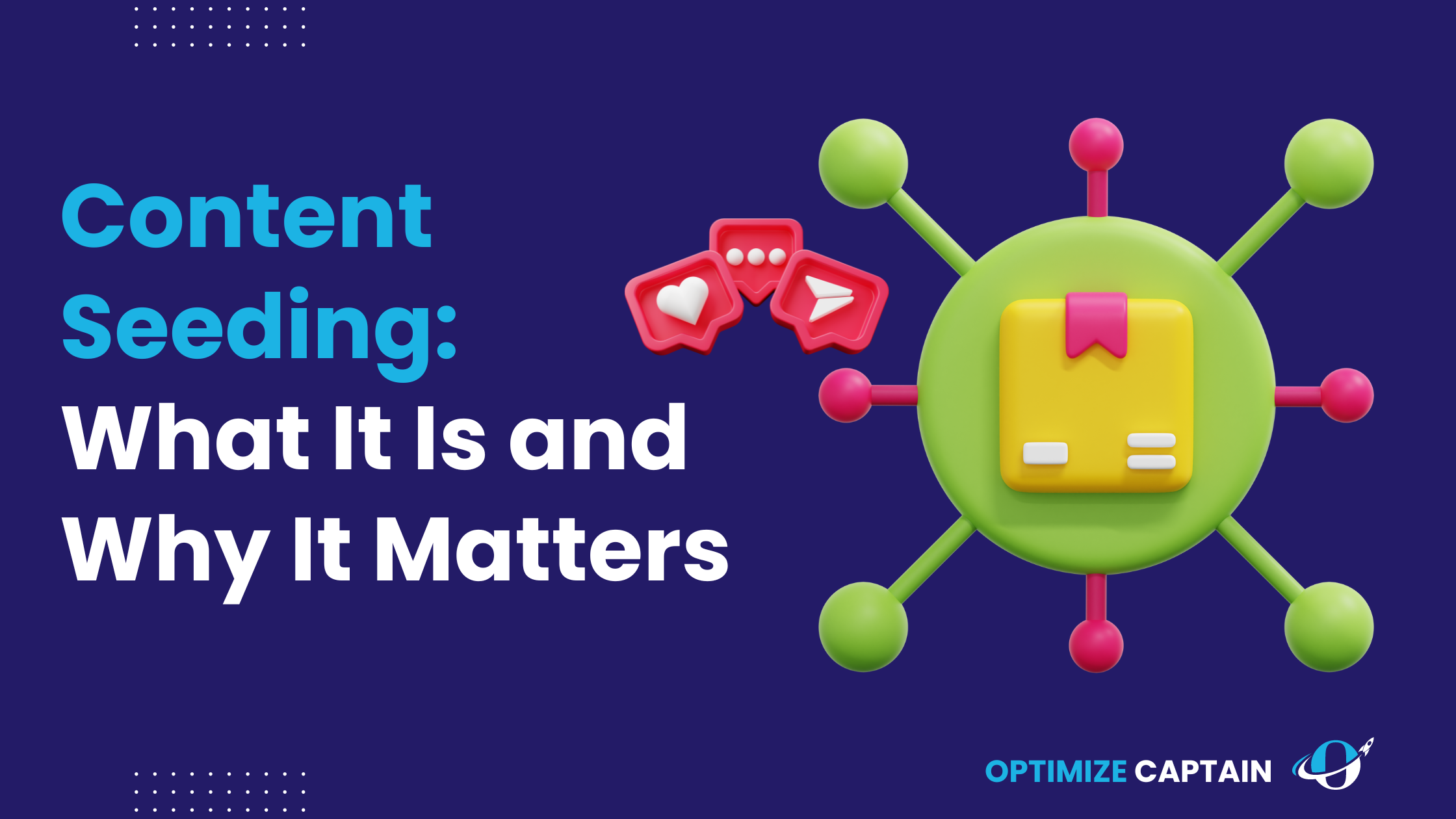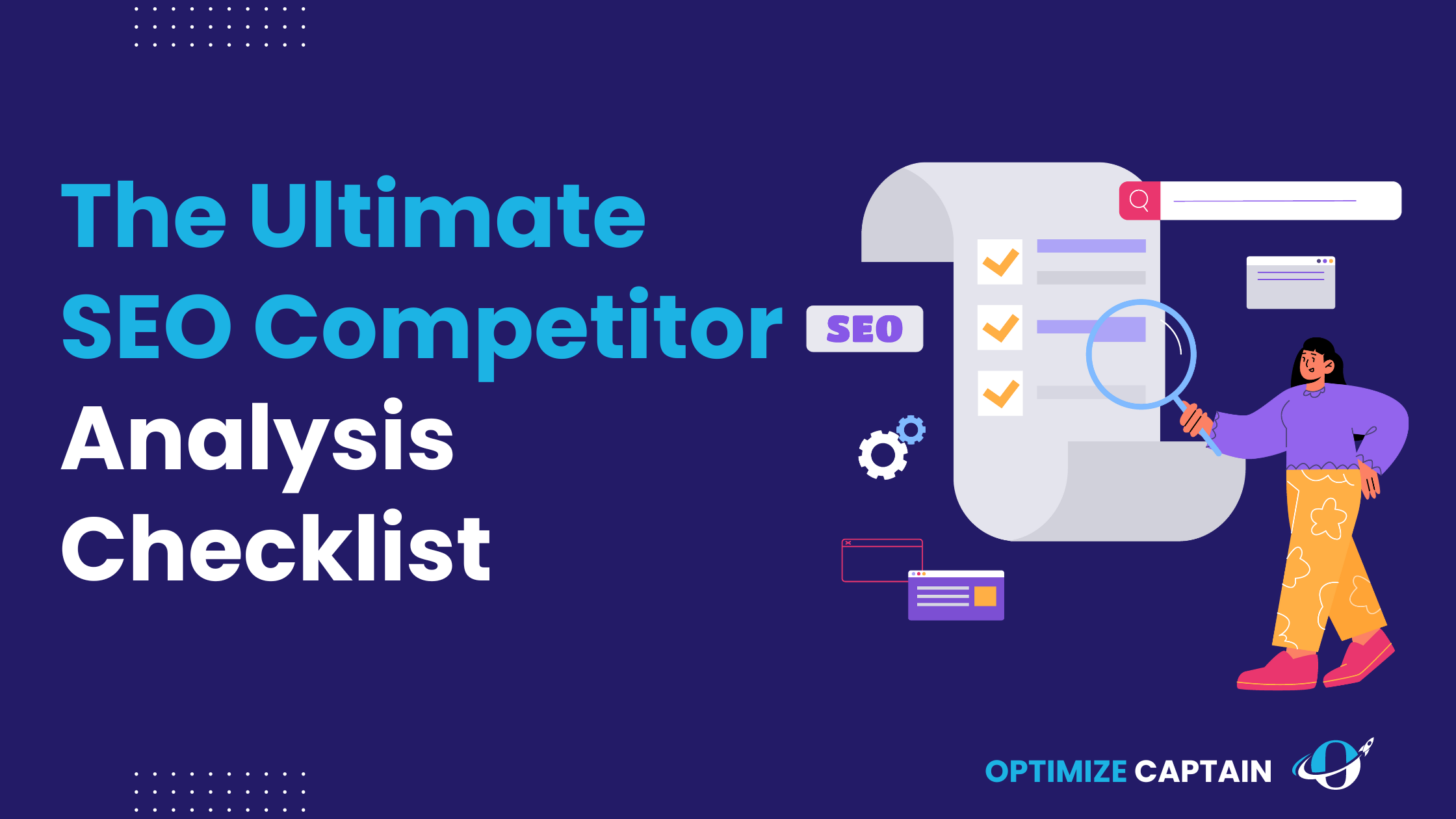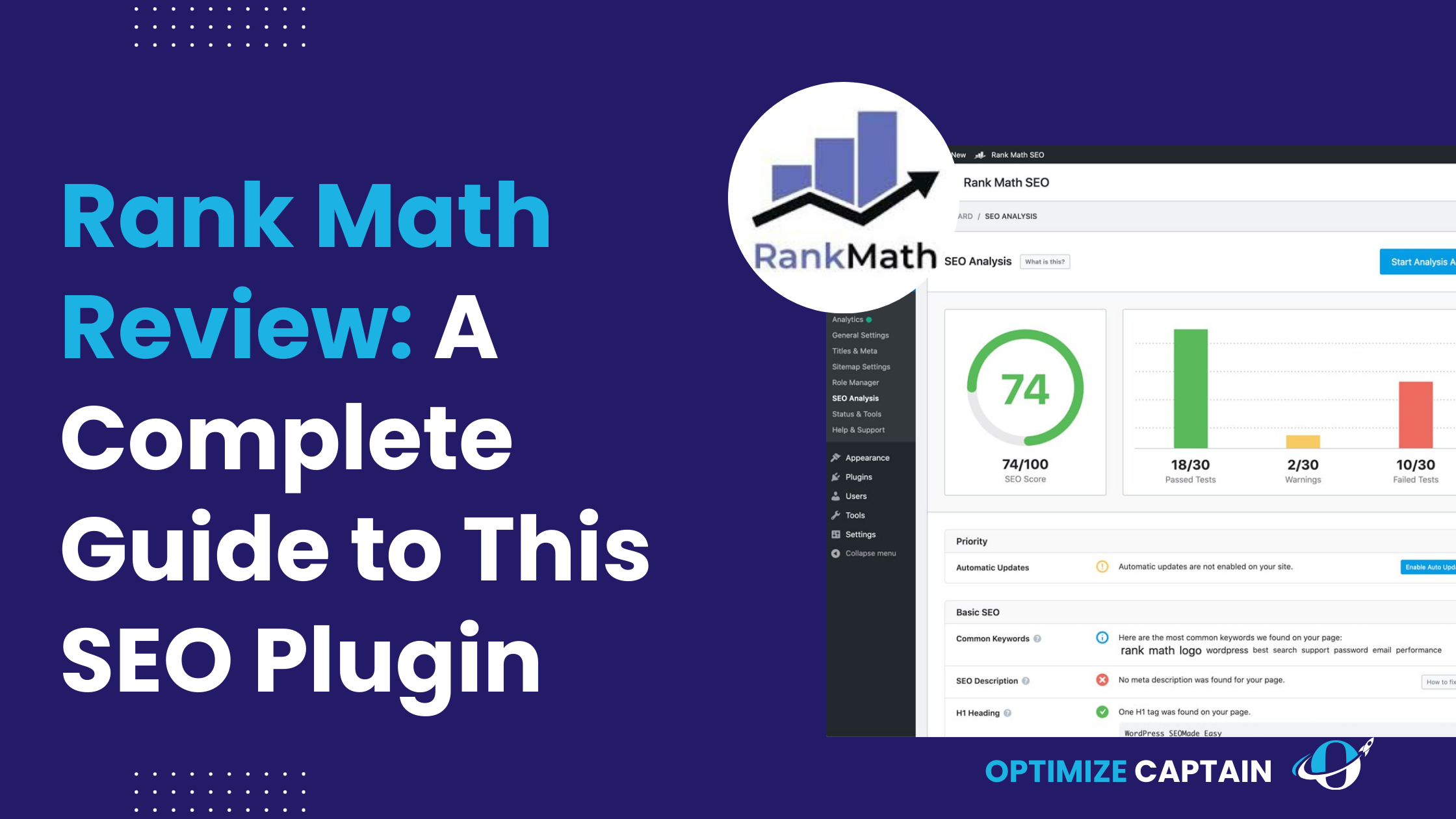Imagine you’re launching a new software product to revolutionize the industry.
But how do you ensure your potential customers understand its value and know how to use it effectively?
This is where technical content comes into play.
In the SaaS world, technical content is a major pillar of content marketing, focusing on explaining complex software products and their functionalities.
It bridges your product’s technical intricacies and your audience’s understanding.
Technical content deals with products that need detailed explanations, such as cloud computing platforms, API integrations, and enterprise software solutions.
One minor mistake in this content can lead to confusion, misapplication of the product, or even loss of trust from your audience.

This article offers a detailed guide on how to write B2B SaaS technical content that educates and engages your audience.
We’ll cover everything from the basics to advanced best practices, ensuring your content is informative and compelling.
By the end of this article, you’ll have the tools to create technical content that drives user engagement and enhances your product’s value proposition.
What is Technical Content?
Technical content is a specialized form of content that focuses on explaining complex products and services, particularly in the SaaS industry.
It’s designed to help users understand the intricacies of software solutions, making it easier for them to utilize these tools effectively.
Types of Technical Content
To illustrate this, let’s take an example of a cloud-based project management tool.
Imagine you’re writing content for this tool.
Here are different types of technical content you might create:
1. Business Case Content:
This type of content explains the value and benefits of your product in a business context.
Let’s say a tech startup adopted your project management tool.
You write a business case highlighting how the startup reduced project delays by 40% using your tool’s task automation features.
This type of content showcases the product’s effectiveness and provides a real-world example that potential customers can relate to.
2. Use Case Content:
Use case content delves into specific scenarios where your product can be applied.
In another instance, you could create a use case for software development teams.
You explain how they can utilize the tool to track bugs, manage feature requests, and collaborate on code reviews, ensuring that all aspects of their workflow are covered.
Now you know the different types of technical content, each serving a unique purpose.
3. How-To Guides:
These are step-by-step instructions on how to use different features of your product.
An example would be a detailed guide on setting up a new project in the tool, complete with screenshots and tips for best practices.
4. API Documentation:
You’ll need to provide developers API documentation explaining how to integrate your tool with other software.
This content should thoroughly detail every endpoint, parameter, and potential error code.
In another instance, you could create a use case for software development teams.
You explain how they can utilize the tool to track bugs, manage feature requests, and collaborate on code reviews, ensuring that all aspects of their workflow are covered.
Now you know the different types of technical content, each serving a unique purpose.
Why is Technical Content Important for SaaS?
Technical content is more than just instructional material; it’s a critical component of a successful SaaS strategy.
Here’s why it’s so important for SaaS companies:
Enhances User Understanding
In the SaaS industry, products can be complex and multifaceted.
Technical content helps bridge the gap between your product’s capabilities and the user’s understanding.
For instance, suppose a user struggling to set up integrations in a CRM tool.
A well-written guide that walks them through each step, complete with screenshots and troubleshooting tips, can significantly enhance their understanding and satisfaction with the product.
Boosts SEO and Organic Traffic
Search engines favour websites that provide valuable, informative content.
By producing high-quality technical content, you can improve your site’s SEO, making it easier for potential customers to find you online.
Let’s say you create a detailed article on “How to Use API Integrations in SaaS Products.”
By incorporating relevant keywords and providing valuable insights, this content can attract organic traffic from users searching for information on API integrations, thereby increasing your website’s visibility.
Establishes Authority and Trust
Providing comprehensive technical content positions your company as an authority in your industry.
When users see that you have detailed guides, case studies, and documentation, they are more likely to trust your brand.
This trust can lead to increased customer loyalty and retention.

Facilitates Customer Success
Technical content is crucial for customer success.
It ensures that users have the resources they need to overcome challenges and make the most of your software.
For instance, a troubleshooting guide can help users resolve issues quickly, reducing the need for support tickets and improving their overall experience.
Process of Writing SaaS Technical Content
Writing technical content for SaaS involves several steps to ensure clarity, accuracy, and engagement. Here’s a comprehensive process to guide you:
1. Research and Understand Your Audience
Understanding your audience is the first and most crucial step. Identify who will be reading your content. Are they developers, IT managers, or business executives? Each group has different needs and levels of understanding.
Tip: Create detailed user personas to represent your different audience segments. This will help you tailor your content to their specific needs and levels of understanding.
Example: If you’re writing for developers, include detailed code examples and technical jargon. For business executives, focus on the benefits and high-level functionalities.
2. Define Your Goals
Clearly define what you want to achieve with your content. Is the goal to educate, convert, or inform? Knowing your goals will help you structure your content effectively and ensure it aligns with your content marketing strategy.
Tip: Align your content goals with your overall marketing strategy.
Note: Having clear goals helps you structure your content effectively.
Example: Focus on comprehensive guides and tutorials for educational content. For conversion-focused content, include calls to action and highlight product benefits.
3. Conduct Keyword Research
Keyword research is essential for SEO and ensuring your content reaches the right audience. Use tools like Ahrefs, SEMrush, and Google Keyword Planner to find relevant keywords with good search volume and moderate difficulty.
Tip: Use tools like Ahrefs, SEMrush, and Google Keyword Planner to find relevant keywords with good search volume and moderate difficulty.
Note: Incorporate both primary and long-tail keywords naturally into your content.
Example: For a CRM tool, keywords might include “CRM integration guide,” “how to use CRM software,” and “benefits of CRM for small businesses.”
4. Create a Detailed Outline
An outline helps organize your thoughts and ensures your content flows logically. Include subheadings and bullet points to break the content into manageable sections.
Tip: Include subheadings and bullet points to break the content into manageable sections.
Note: A well-structured outline makes the writing process more efficient.
Example: Your outline might include sections like “Introduction,” “Why CRM Integrations Matter,” “Step-by-Step Integration Guide,” and “Best Practices” for an article on CRM integrations.
5. Write the Content
Start with a strong introduction that grabs the reader’s attention. Use clear and concise language, and avoid jargon unless it’s necessary. Ensure your content is engaging and informative.
Tip: Break up the text with visuals such as screenshots, diagrams, and videos to enhance understanding.
Example: When explaining a feature, include a screenshot showing where to find it in the software.
6. Optimize for SEO
SEO optimization ensures your content is discoverable by search engines. Include your target keywords in the title, headers, meta descriptions, and throughout the body of the text. Ensure your content is mobile-friendly and has a fast loading time.
Tip: Include your target keywords in the title, headers, meta descriptions, and throughout the body of the text.
Note: Ensure your content is mobile-friendly and has a fast loading time.
Example: If your keyword is “API integration,” ensure it appears naturally in the introduction, subheadings, and conclusion.
7. Review and Edit
Proofread your content for grammar and spelling errors. Ensure the information is accurate and up-to-date. Get feedback from colleagues or subject matter experts to ensure technical accuracy.
Tip: Get feedback from colleagues or subject matter experts to ensure technical accuracy.
Example: Before publishing a guide on software deployment, have a developer review the content to ensure all technical details are correct.
8. Publish and Promote
Once your content is ready, publish it on your blog or website. Then, promote it through social media, email newsletters, and other channels to reach a broader audience.
Tip: Promote your content through social media, email newsletters, and other channels to reach a broader audience.
Example: Share a link to your new how-to guide on LinkedIn and encourage your followers to share it with their network.
Best Practices for Writing B2B SaaS Technical Content
Creating high-quality technical content for B2B SaaS products involves clear writing, strategic structuring, and an in-depth understanding of the product and audience. Here are some detailed best practices to help you craft content that is both effective and engaging.
1. Focus on Problem-Solving
Technical content should address your audience’s problems and provide clear, actionable solutions. Users often turn to technical content because they are looking for help with specific issues. For instance, if a person is searching to integrate your SaaS tool with another platform, your content should focus on the integration process, common challenges, and how to overcome them.
Tips:
- Identify Common Pain Points: Understand your users’ common challenges and questions. Tailor your content to address these issues directly. For instance, if users frequently encounter API integration issues, create content outlining the most common API errors and how to resolve them.
- Provide Step-by-Step Solutions: Break down complex processes into simple, manageable steps. This makes it easier for readers to follow and implement your advice. For example, if your content is about setting up a new feature, provide a clear, step-by-step guide with screenshots to illustrate each step.
Example: A guide on troubleshooting connectivity issues in a SaaS application should list common problems, their causes, and detailed step-by-step solutions. If a user searches for “Why is my SaaS tool not connecting,” your guide should address various connectivity issues such as network settings, firewall configurations, and server errors, providing clear instructions on diagnosing and fixing each problem.
2. Use a Conversational Tone
Even though technical content involves complex information, presenting it in a conversational tone can make it more accessible and engaging. This helps make the content less intimidating and more relatable to a broader audience.
Tips:
- Write as You Speak: Use a tone that feels natural and engaging. Avoid overly formal language and write as if you are explaining the concept to a colleague.
- Ask Questions: Engage the reader by asking questions and then providing the answers, creating an interactive feel.
Example: Instead of saying “The system requires configuration,” say “Ever wondered how to configure the system? Here’s a simple guide.”
3. Implement a Layered Approach
Not all readers need the same level of detail. Provide a high-level overview for general understanding and allow readers to delve deeper into specific areas.
Tips:
- Use Summaries: Start with a brief summary of the main points to give readers a quick overview. This helps them decide whether they need to read the entire article or just a specific section.
- Provide Links: Offer links to more detailed articles or sections for readers who need in-depth information. This layered approach caters to both novices and experts.
Example: An overview of a new software feature can be followed by links to detailed technical specifications and user manuals.
4. Encourage User Interaction
Make your content interactive to keep readers engaged and encourage feedback.
Tips:
- Include Quizzes and Surveys: Interactive elements can help readers test their understanding and engage more deeply with the content. This can also provide valuable feedback for you.
- Ask for Feedback: Encourage readers to leave comments, ask questions, and share their experiences. This interaction can help build a community around your content.
Example: A tutorial can end with a quiz to test the reader’s understanding of the material.
5. Leverage Multimedia
Using multimedia elements such as videos, infographics, and screenshots can help explain complex concepts more effectively and keep readers engaged.
Tips:
- Incorporate Videos: Demonstration videos effectively show how a product works. They provide a visual and auditory way to learn, which can be more engaging than text alone.
- Use Infographics: Infographics can simplify complex data and present it visually appealingly. They are great for breaking down processes and showing relationships between different elements.
Example: An explainer video on setting up a SaaS tool can be more effective than a text-only guide. Similarly, an infographic showing the steps of API integration can make the process more transparent.
6. Personalize the Content
Personalization can make your content more relevant and engaging for your audience.
Tips:
- Segment Your Audience: Create different content for user segments based on their needs and preferences. This ensures that the content is relevant to all readers.
- Use Personalized Examples: Refer to industry-specific examples that resonate with your audience. This helps in making the content relatable and practical.
Example: A guide for healthcare SaaS users should include examples relevant to the healthcare industry, such as managing patient records. For financial SaaS users, examples could focus on compliance and regulatory reporting.
7. Establish a Clear Writing Process
A clear writing process can improve the quality and consistency of your technical content.
Tips:
- Create a Style Guide: To maintain consistency, ensure all writers adhere to the same standards and guidelines. This includes terminology, formatting, and style preferences.
- Use Templates: Develop templates for different types of content to streamline the writing process. Templates ensure that all necessary information is included and presented consistently.
Example: A style guide might specify that all technical documents should use the same terminology and formatting conventions. A template for a technical guide might include sections for an introduction, step-by-step instructions, troubleshooting tips, and FAQs.
8. Prioritize Clarity Over Brevity
While conciseness is important, clarity should never be sacrificed for brevity.
Tips:
- Explain Terms: Always explain technical terms and acronyms the first time they are used to ensure all readers understand. This is especially important for readers who might not be familiar with the terminology.
- Use Examples: Illustrate points with concrete examples to enhance understanding. Examples help to clarify complex concepts and show practical applications.
Example: When introducing a new term, provide a definition and an example to ensure the reader fully understands it. For instance, when explaining “API endpoint,” include a brief definition and an example of a common API endpoint.
9. Incorporate Real-World Scenarios
Using real-world scenarios helps to illustrate how your product can be used effectively.
Tips:
- Use Case Studies: Case studies provide concrete examples of how your product solves real problems. They show the product in action and highlight its benefits.
- Include Testimonials: User testimonials can add credibility and relatability to your content. Hearing from actual users can be very convincing for potential customers.
Example: A case study showing how a SaaS product improved a company’s workflow can make the content more relatable and convincing. Including metrics and specific results makes the case study more powerful.
10. Maintain a Consistent Update Schedule
Regular updates ensure that your content remains relevant and accurate.
Tips:
- Schedule Regular Reviews: Regularly review and update your content to reflect the latest product features and industry standards. Outdated content can mislead users and damage your credibility.
- Monitor User Feedback: Use feedback to identify areas that need updating or clarification. This ensures that your content continues to meet the needs of your audience.
Example: An API documentation should be updated with each new version release to include new endpoints and changes. Regularly updating tutorials and guides ensures they remain relevant and useful.
11. Conduct Interviews with Subject Matter Experts
Interviews with subject matter experts (SMEs) provide valuable insights and add depth to your content. People can easily tell when content is written by someone with a deep understanding of the subject.
Tips:
- Prepare Thoroughly: Research the SME’s background and prepare specific, relevant questions. This ensures the interview is focused and productive.
- Record the Interview: Ensure accuracy and capture details by recording the conversation. This allows you to refer back to the interview when writing the content.
Things to Remember When Conducting Interviews
- Set Clear Objectives: Know what you want to achieve with the interview. This helps you frame the right questions and keep the interview focused.
- Choose the Right Platform: Use reliable tools for virtual interviews to ensure clear communication. This can help avoid technical issues that might disrupt the conversation.
- Be Respectful of Time: Keep the interview concise and focused. Respect the SME’s time and schedule to build a positive relationship.
12. Build Credibility and Trust
It is crucial to ensure that your technical content is perceived as trustworthy and authoritative. Readers can easily discern whether content is written for marketing purposes or by an experienced professional.
Tips:
- Collaborate with SMEs: Sit with engineers and technical experts, take notes, and write from their perspective. This ensures the content is accurate and credible.
- Showcase Expertise: Indicate that the content is backed by experts. Use quotes, insights, and testimonials from professionals in the field.
Example: Highlight that senior developers reviewed your API integration guide and include their expert recommendations.
B2B SaaS Technical Content Interview Questions
Interviewing subject matter experts (SMEs) is an excellent way to gather in-depth information for your technical content. Here are some industry-specific questions:
For Cloud Computing SaaS
Target Audience: Cloud Architects, IT Managers
Questions:
- Can you explain the primary benefits of our cloud platform?
- What are the common challenges users face during cloud migration?
- Can you describe a real-world scenario where our platform significantly improved operations?
For Project Management Tools
Target Audience: Project Managers, Team Leads
Questions:
- How does our tool help in managing project timelines and resources?
- What features do you find most valuable for remote team collaboration?
- Can you share an example of how our tool helped streamline a complex project?
For CRM Software
Target Audience: Sales Managers, Marketing Professionals
Questions:
- What CRM features do you use the most, and why?
- How has our CRM software improved your customer relationship management?
- Can you provide a case study of a successful sales campaign managed with our CRM?
For Cybersecurity Solutions
Target Audience: Security Analysts, IT Administrators
Questions:
- What are the key security threats that our solution addresses?
- How does our product integrate with existing security infrastructure?
- Can you describe an incident where our solution prevented a significant security breach?
For API Integration Tools
Target Audience: Developers, Software Engineers
Questions:
- How does our API simplify the integration process with other software?
- What are the common challenges developers face with API integration?
- Can you share an example of a successful integration project using our API?
By asking these targeted questions, you can gather valuable insights that will enrich your technical content, making it more relevant and engaging for your audience.
Remember, the goal is to provide clear, actionable information that helps users understand and utilize your SaaS product effectively.
Common Mistakes to Avoid While Writing SaaS Technical Content
When writing technical content for B2B SaaS, several common mistakes can undermine the effectiveness of your content. Here’s a detailed list of these pitfalls and how to avoid them:
1. Overloading with Jargon
Mistake: Using too much technical jargon can alienate readers who are not as familiar with the terms. This is especially true for mixed audiences that might include both technical and non-technical readers.
Solution: Use simple language and explain technical terms the first time they are used. Provide clear definitions and examples to enhance understanding. The goal is to make your content accessible to all readers, regardless of their technical background.
Example: Instead of using the term “API” without context, explain it as “Application Programming Interface (API), which allows different software systems to communicate with each other.”
2. Lack of Structure
Mistake: A poorly structured article can confuse readers and make it difficult for them to find the information they need. This lack of organization can cause readers to abandon your content out of frustration.
Solution: Use clear headings, subheadings, bullet points, and numbered lists to organize your content. This helps readers navigate the article easily and find the information they are looking for quickly.
Example: For a guide on software integration, use sections like “Introduction,” “Step-by-Step Integration Guide,” “Common Issues and Solutions,” and “Conclusion” to break down the content logically.
3. Ignoring the Audience
Mistake: Failing to understand your audience’s needs and knowledge level can result in content that is either too complex or too simplistic. This disconnect can lead to disengagement and a lack of trust in your expertise.
Solution: Create detailed personas for your audience segments and tailor your content to their needs. Use language and examples that resonate with each segment. This approach ensures that your content is relevant and engaging for all readers.
Example: If writing for developers, include detailed code examples and technical discussions. For business executives, focus on high-level benefits and ROI.
4. Failing to Update Content
Mistake: Outdated content can mislead readers and damage your credibility. Technology evolves rapidly, and content that does not reflect the latest advancements can become obsolete.
Solution: Regularly review and update your content to reflect new features, changes, or advancements in your product or industry. This practice ensures that your content remains accurate, relevant, and trustworthy.
Example: Update API documentation whenever endpoints or methods change. Regularly review how-to guides to ensure they reflect the current user interface and features.
5. Skipping SEO Optimization
Mistake: Neglecting SEO can result in your content not being found by the intended audience. With proper optimization, your valuable content may reach its full potential regarding visibility and traffic.
Solution: Incorporate relevant keywords naturally, optimize meta descriptions, titles, and headers, and ensure your content is mobile-friendly and loads quickly. This helps search engines understand your content and rank it appropriately.
Example: If your content is about “cloud security best practices,” make sure this keyword appears in the title, headers, and throughout the body of the text. Use related keywords and synonyms to enhance SEO.
6. Not Including Visuals
Mistake: Text-heavy content can be overwhelming and challenging to follow. Without visual aids, readers might struggle to understand complex concepts or lose interest quickly.
Solution: Use visuals such as screenshots, diagrams, infographics, and videos to break up the text and illustrate complex points. Visuals can make the content more engaging and more accessible to comprehend.
Example: Include screenshots of each step when explaining a software configuration process. Use diagrams to show the architecture of a system or workflow.
7. Inadequate Proofreading
Mistake: Grammar and spelling errors can undermine the professionalism of your content, distract readers, and reduce its credibility.
Solution: Always proofread your content multiple times and consider having a colleague or a professional editor review it. This ensures that your content is polished and error-free.
Example: Before publishing a blog post, use tools like Grammarly for initial checks and then have a peer review it for additional insights.
8. Ignoring User Feedback
Mistake: Not taking user feedback into account can result in content that does not address your audience’s actual needs and questions. Ignoring feedback can lead to missed opportunities for improvement and user frustration.
Solution: Actively seek and incorporate user feedback to continuously improve your content. Use surveys, comments, and direct feedback to understand your audience’s needs and where your content might be lacking.
Example: If users frequently ask for more detailed troubleshooting steps, consider expanding that section in your guides. Regularly check the comments section of your blogs and forums for feedback and suggestions.
SaaS Technical Content Example
To illustrate effective SaaS technical content, let’s look at examples from different industries:
1. Project Management Tools
Example: Asana’s Guide to Project Management
- Asana provides comprehensive resources on using its tool for various project management needs. The content is well-structured, includes step-by-step guides, and incorporates visuals to enhance understanding.
2. CRM Software
Example: HubSpot’s Knowledge Base
- HubSpot offers detailed articles, videos, and tutorials on using different CRM software features, addressing common user questions and issues.
3. Cloud Computing Solutions
Example: AWS’s Documentation
- AWS provides extensive technical content for developers and IT professionals. It includes detailed API documentation, tutorials, and best practices for using their cloud services.
4. Cybersecurity Solutions
Example: Palo Alto Networks’ TechDocs
- Palo Alto Networks offers thorough documentation on their cybersecurity products, including configuration guides, troubleshooting tips, and FAQs.
These examples demonstrate how to create effective technical content that is informative, user-friendly, and visually engaging.
SaaS Technical Content Template
Here’s a detailed template that you can use to create comprehensive technical content for SaaS products:
| Section | Description |
| Title | Clear and descriptive title that includes primary keywords |
| Keyword Volume | Information on keyword volume and difficulty, helping to guide SEO strategy |
| Meta Description | A concise summary of the content, optimized with primary keywords for SEO |
| Introduction | Brief introduction explaining the purpose of the content and what the reader will learn |
| Overview | High-level summary of the topic and its importance |
| Step-by-Step Instructions | Detailed instructions with numbered steps and accompanying visuals (screenshots, diagrams, videos) |
| Tips and Best Practices | Additional tips and best practices for using the product effectively |
| Common Issues and Solutions | List of common problems users might face and their solutions |
| Use Cases | Real-world examples and scenarios where the product is applied |
| Interviews (Optional) | Insights and quotes from subject matter experts, engineers, or developers |
| FAQs | Frequently asked questions related to the topic |
| Conclusion | Summary of key points, emphasizing the benefits and next steps for the reader |
| Additional Resources | Links to related articles, tutorials, and external resources |
| Author | Information about the author, including their expertise and contact information |
| Additional Help | Credits or acknowledgments for engineers, developers, and other contributors |
Conclusion
Writing effective technical content for B2B SaaS products requires a strategic approach that combines clarity, engagement, and expertise. You can create content that informs and engages your audience by following best practices, focusing on problem-solving, using a conversational tone, leveraging multimedia, and incorporating real-world scenarios.
Avoid common mistakes like overloading with jargon, neglecting SEO, and failing to update your content.
FAQ’s
1. What is B2B SaaS technical content?
B2B SaaS technical content is informational material designed to help business users understand and effectively use Software as a Service (SaaS) products. This content can include user guides, tutorials, API documentation, troubleshooting articles, and best practices.
2. Why is technical content important for B2B SaaS companies?
Technical content is crucial for B2B SaaS companies because it helps users understand complex software products, improving user experience and satisfaction. It also supports customer success by providing solutions to common problems, enhances SEO efforts by attracting organic traffic, and establishes the company as an authority in the industry.
3. How do I identify the right audience for my technical content?
Identify your audience by creating detailed user personas based on market research, customer feedback, and analytics. These personas should represent different audience segments, such as developers, IT managers, or business executives, and help tailor your content to meet their needs and knowledge levels.
4. What types of visuals should I include in my technical content?
Include visuals such as screenshots, diagrams, infographics, and videos. These elements can help illustrate complex points, break up text-heavy sections, and make the content more engaging and easier to understand.
5. What common mistakes should I avoid when writing technical content?
Common mistakes include overloading with jargon, lack of structure, ignoring the audience’s needs, failing to update content, skipping SEO optimization, not including visuals, inadequate proofreading, and ignoring user feedback. Avoiding these mistakes helps ensure your content is effective and user-friendly.

